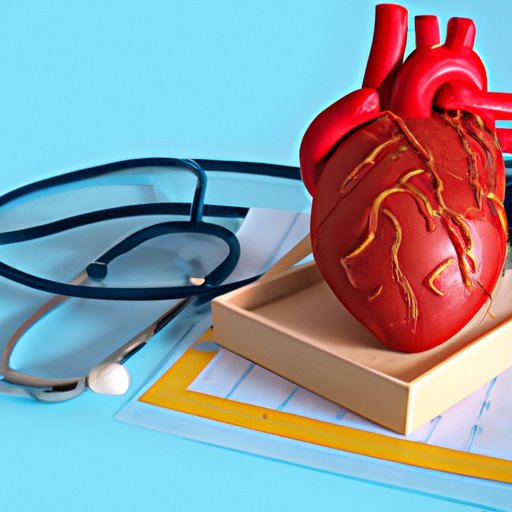
Introduction
Cardiac catheterization is a diagnostic and treatment option that is used to detect and diagnose heart disease. This procedure involves the insertion of a thin, flexible tube called a catheter into a blood vessel to access the heart. Cardiac catheterization is a life-saving procedure that can provide critical information about the function and health of the heart. This article will cover everything you need to know about cardiac catheterization, including its benefits and risks.
Understanding Cardiac Catheterization: Why It Can Be a Life-Saving Procedure
Cardiac catheterization is a medical procedure that involves the insertion of a thin, flexible tube called a catheter into a blood vessel to access the heart. The procedure is performed under local anesthesia and is usually done on an outpatient basis. The catheter is guided through the blood vessels to the heart, where it can measure pressure and blood flow in the heart and its vessels.
Cardiac catheterization is an important diagnostic tool for heart disease because it can detect and diagnose many types of heart disease that may be missed by other diagnostic methods. It is particularly useful for diagnosing problems with the coronary arteries, which are the blood vessels that supply the heart muscle with oxygen and nutrients. Cardiac catheterization can also be used to diagnose problems with the heart valves, chambers, and electrical system.
Cardiac catheterization has been a life-saving procedure for many patients. Patients who have undergone cardiac catheterization have reported significant improvements in their heart conditions. For example, some patients with blocked coronary arteries have been able to avoid heart bypass surgery after undergoing cardiac catheterization. Other patients have had their heart function significantly improved after the procedure.
When Is Cardiac Catheterization Necessary for Cardiovascular Diagnosis and Treatment?
Cardiac catheterization may be necessary for patients with heart disease who experience symptoms such as chest pain or shortness of breath. Patients who have a high risk of heart disease may also need to undergo cardiac catheterization to detect heart problems that have not yet caused symptoms. Patients who have already been diagnosed with heart disease may also need to undergo cardiac catheterization to determine the best treatment plan.
There are several types of cardiac catheterization procedures that may be recommended depending on the patient’s condition and symptoms. These include coronary angiography, right heart catheterization, and left heart catheterization. Factors that may affect the necessity of the procedure include the patient’s age, medical history, and overall health.
Exploring the Benefits of Cardiac Catheterization for Diagnosing and Treating Heart Disease
Early detection and diagnosis of heart disease are critical to preventing serious complications and improving outcomes. Cardiac catheterization is a valuable diagnostic tool because it can detect heart disease that may not be visible by other diagnostic methods. Early detection can lead to earlier treatment and better outcomes for patients.
In addition to its diagnostic benefits, cardiac catheterization can also be used to treat certain heart conditions. For example, cardiac catheterization can be used to open narrowed or blocked coronary arteries. This can improve blood flow to the heart and reduce the risk of heart attack.
Like any medical procedure, cardiac catheterization does carry some risks. These risks may include bleeding, infection, and damage to the blood vessels or heart. However, these risks are relatively rare, and most patients who undergo cardiac catheterization have a smooth recovery.
A Comprehensive Guide to Cardiac Catheterization: What It Is, How It Works, and When You Might Need It
If your doctor recommends cardiac catheterization, you may have many questions about the procedure. Here is a step-by-step guide to what occurs during a cardiac catheterization procedure:
– You will receive local anesthesia to numb the area where the catheter will be inserted.
– The catheter will be inserted into a blood vessel in your arm, groin, or neck and guided through the blood vessels to your heart.
– Contrast dye may be injected through the catheter to help visualize the blood vessels and heart on X-rays.
– The catheter will be used to measure blood pressure and flow in your heart and its vessels, as well as to perform any necessary treatments.
Before the procedure, your doctor will provide you with instructions on how to prepare physically and mentally. You may need to avoid eating or drinking for a certain period before the procedure, and you may be advised to arrange for someone to drive you home afterward.
After the procedure, you will be monitored closely to ensure there are no complications. You may need to remain in the hospital overnight for observation, and you will need to avoid strenuous activities for a short period after the procedure.
Why Cardiac Catheterization Is Often Recommended for Patients with Heart Conditions: Insights from Cardiologists
Cardiologists often recommend cardiac catheterization to their patients because it is a valuable diagnostic and treatment tool for heart disease. Cardiac catheterization can provide critical information about the function and health of the heart, which can inform treatment plans and improve outcomes for patients.
Patients who have undergone cardiac catheterization have reported positive outcomes and improved quality of life. Some patients have reported feeling more energetic and having fewer symptoms after the procedure. While there are potential risks and complications associated with cardiac catheterization, most patients have a smooth recovery and experience significant health benefits.
Conclusion
Cardiac catheterization is a life-saving procedure that can provide critical information about the function and health of the heart. It is used to diagnose and treat many types of heart disease and has improved outcomes for many patients. While there are risks associated with the procedure, most patients experience a smooth recovery and significant health benefits. If you experience symptoms of heart disease, it is important to seek medical attention and consider cardiac catheterization as a diagnostic and treatment option.




